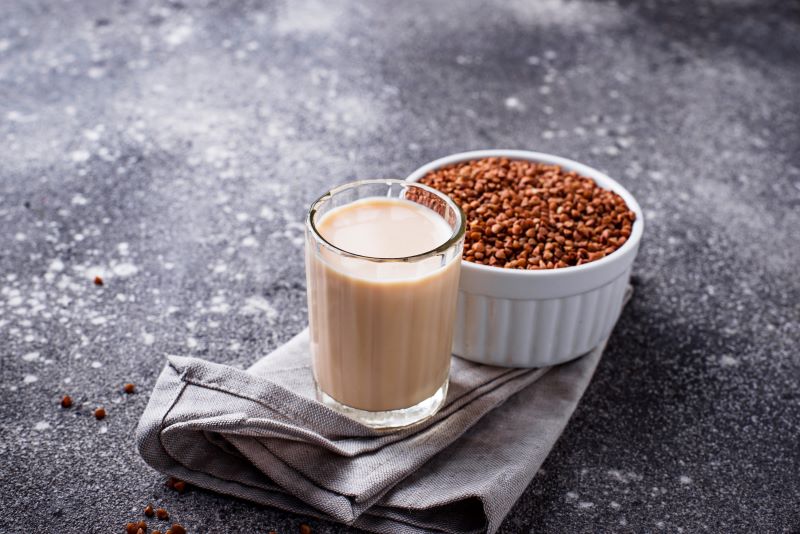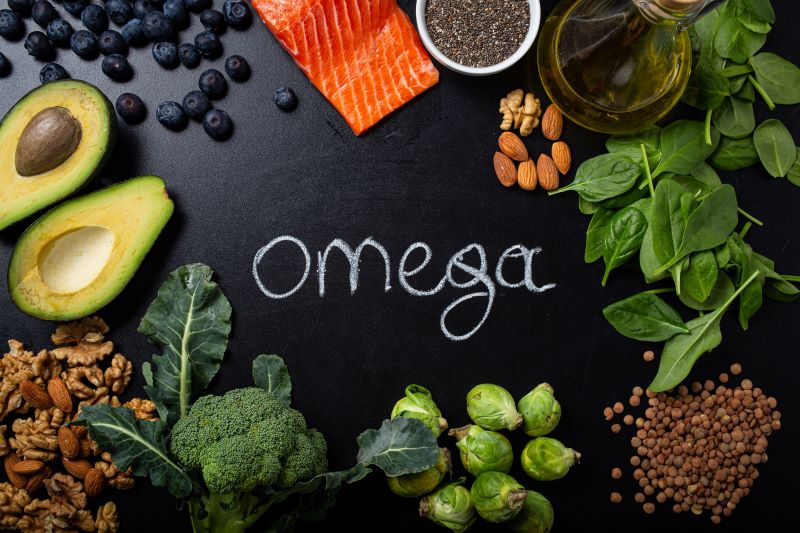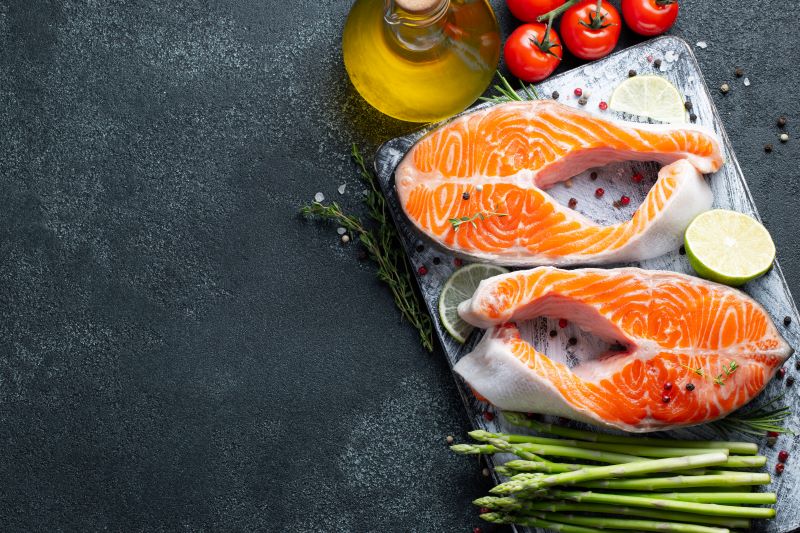31 Best Foods for Typhoid Patients for Faster Recovery

Enteric fever is a serious infectious disease caused by the bacterium Salmonella Typhi, which is transmitted mainly through contaminated food and water. It is important to eat well while suffering from typhoid fever to boost the body's immune system which will help in fighting back the infection.
Certain meals can relieve symptoms, replenish lost nutrients, and improve general health. In this article, we provide a list of recommended best foods for typhoid patients' diets, which could help them recover faster.

Table of Contents

What is Typhoid?
Salmonella Typhi bacteria causes typhoid fever, which is a bacterial infection. It can be caught from contaminated food or water or by close contact with an infected person.
In extreme cases, it may affect many organs in the body, leading to death if not treated promptly using antibiotics. Typhoid fever is a big worry when there are poor sanitation facilities and not enough clean drinking water.
31 Best Food for Typhoid Patients Rich in Omega 3
Eating a balanced diet is important to help your body recover faster when you have typhoid. Omega-3-rich foods such as fatty fish, walnuts and flaxseeds have anti-inflammatory properties which relieve symptoms and boost immunity.
These nutrients, known for their capacity to control inflammation, could also be beneficial in reducing fever and gastrointestinal upset associated with typhoid, thus easing the recovery process while ensuring all-around wellness.
List of Omega-3 Rich Vegetables for Typhoid Patients
Vegetables are indispensable parts of a balanced diet for patients suffering from typhoid. Find out about some omega-3-rich vegetables that have anti-inflammatory effects thereby relieving symptoms and boosting immunity during the healing process after typhoid fever.
SNo. |
Vegetables | Description | Omega-3 Content (Per 100 grams) |
| 1 | Spinach | Easily digestible and rich in iron and antioxidants. | 0.14 g |
| 2 | Brussels Sprouts | High in fibre, aids digestion, and supports the immune system. | 0.13 g |
| 3 | Kale | Nutrient-dense promotes detoxification and boosts energy. | 0.18 g |
| 4 | Broccoli | Supports gut health and provides vitamins C and K. | 0.05 g |
| 5 | Cauliflower | Anti-inflammatory, supports bone health, and is low in calories. | 0.05 g |
| 6 | Lettuce | Hydrating contains vitamins A and K, which aid in digestion. | 0.03 g |
List of Fruits High in Omega-3 for Typhoid Patients

Fruits and juices give patients with typhoid the necessary nutrients and fluids. There is a wide range of fruits and juices containing omega-3, which not only help in reducing inflammation but also contribute towards overall health improvement while recuperating from typhoid fever.
SNo. |
Fruits | Description | Omega-3 Content (Per 100 grams) |
| 7 | Kiwi | Kiwifruit is easy to digest and provides a good source of vitamin C, which can help boost the immune system and aid in recovery from typhoid. | 0.09 g |
| 8 | Avocado | Avocado is easy to digest and provides healthy fats and essential nutrients supporting the body's immune system and promoting healing during typhoid recovery. | 0.2 g |
| 9 | Strawberries | Strawberries are easy to digest and provide a good source of vitamin C, which can help boost the immune system and aid in recovery from typhoid. | 0.06 g |
| 10 | Oranges | Oranges are easy to digest and provide a good source of vitamin C, which can help boost the immune system and aid in recovery from typhoid. | 0.02 g |
| 11 | Papaya | Papaya is easy to digest and provides enzymes that can aid digestion and promote healing during typhoid recovery. | 0.05 g |
List of Dairy Products and Nuts for Typhoid Patients

Dairy products and nuts serve as important sources of omega-3 fatty acids during the treatment period of patients with typhoid. Here is the list of some of the food items.
SNo. |
Dairy Products and Nuts | Description | Omega-3 Content (Per 100 grams) |
| 12 | Greek Yoghurt | Greek yoghurt is easy to digest and provides probiotics that can help restore gut health during typhoid. | 0.05 g |
| 13 | Milk | Milk is a good source of omega-3 fatty acids and protein, which can help support the body's immune system and promote healing during typhoid recovery. | 0.01 g |
| 14 | Almonds | Almonds are a good source of omega-3 fatty acids, protein, and essential nutrients, which can help support the body's immune system and promote healing during typhoid recovery. | 0.13 g |
| 15 | Brazil Nuts | Brazil nuts contain omega-3 fatty acids and selenium, which can help reduce inflammation and support the immune system during typhoid recovery. | 0.014 g |
| 16 | Walnuts | Walnuts are a good source of omega-3 fatty acids and protein, which can help support the body's immune system and promote healing during typhoid recovery. | 9.08 g |
| 17 | Hemp Seeds | Hemp seeds are rich in omega-3 fatty acids and protein, which can help reduce inflammation and support the immune system during typhoid recovery. | 8.75 g |
| 18 | Flaxseeds | Flaxseeds are rich in omega-3 fatty acids, which can help reduce inflammation and promote healing in the body. They also provide fibre, which can help regulate digestion during recovery from typhoid. | 22.81 g |
| 19 | Chia Seeds | They contain ALA and fibre and therefore can be sprinkled over foodstuffs such as yoghurt or added to smoothies. | 17.8 g |
List of Vegetarian Foods for Typhoid Patients

Different vegetarian foods contain omega-3 fatty acids, and these plant-based sources have essential anti-inflammatory effects needed to cope with signs management while recovering against the Salmonella Typhi bacteria.
SNo. |
Food Items | Description | Omega-3 Content (Per 100 grams) |
| 20 | Edamame | Another name for young soybeans is edamame. They provide proteins, omega-3 fatty acids, as well as vital nutrition which supports immunity functions during recuperation stages after contracting typhoid. | 0.5 g |
| 21 | Tofu | Tofu is also made from soybeans and is a good source of omega-3 fatty acids, protein, and essential nutrients, which can help support the body's immune system and promote healing during typhoid recovery. | 0.3 g |
| 22 | Spinach Curry | Spinach is rich in alpha-linolenic acid (ALA), omega-3 fatty acid, and other nutrients such as iron and vitamins. Spinach curry can be included in lunch and enjoyed with rice or roti. | 0.14 g |
| 23 | Porridge | This is simple to digest, provides energy and has the necessary nutrients for recovery. | 0.2 g |
| 24 | Khichdi | This nourishing dish, made from rice and lentils, is easy on the stomach. It can be given to patients suffering from typhoid fever. | 0.1 g |
| 25 | Spinach Soup | Nutrient-rich soup is easily digested and contains necessary vitamins and minerals for quick recovery. | 0.1 g - 0.2 g |
| 26 | Soybeans | Omega three fatty acids are present in them and are an adaptable protein source that suits different recipes. | 1.5 g |
List of Non-Vegetarian Foods for Typhoid Patients

To enhance the diet of typhoid sufferers, non-vegetarian items with omega-3 fatty acids may be used. Look into a few non-veg dishes rich in omega-3 that contain anti-inflammatory features and help manage symptoms during recovery from typhoid fever.
SNo. |
Food Items | Description | Omega-3 Content (Per 100 grams) |
| 27 | Salmon | Salmon, abundant in omega-3 fatty acids, aids in reducing inflammation and fostering recovery in typhoid patients while also supplying essential proteins and nutrients crucial for healing. | 2.26 g |
| 28 | Trout | Trout is a good source of omega-3 fatty acids and also provides protein and essential nutrients. | 1.58 g |
| 29 | Mackerel | Rich with EPA and DHA, mackerel lessens inflammation while boosting immunity during the healing process after a bout of typhoid fever. | 3.45 g |
| 30 | Sardines | Sardines are a good source of omega-3 fatty acids, particularly EPA and DHA, and provide protein and essential nutrients. | 2.2 g |
| 31 | Herring | Herring is rich in omega-3 fatty acids, particularly EPA and DHA, which can help reduce inflammation and support the immune system during typhoid recovery. | 2.67 g |
Useful Tools to Track Your Health
Causes of Typhoid
Typhoid is an infectious disease caused by the bacterium Salmonella Typhi which presents major health hazards across many areas of the world. The following are some of the most important things to know about how it spreads:
- Salmonella Typhi Bacteria: The bacteria can be transmitted through food, water, or contact with people who have already been infected.
- Contaminated Food and Water: Eating/drinking from contaminated sources is another common way to contract this illness.
- Poor Sanitation: Lack of hygiene practices, such as handwashing after using the toilet, greatly increases one’s risk of getting sick due to unsanitary conditions.
- Unhygienic Food Handling: Failure to prepare foods hygienically can facilitate bacteria transfer within them, thus leading to more individuals becoming ill.
- Close Contact with Infected Persons: Being near someone carrying around live germs raises chances significantly higher than with no carriers nearby.
- Carrier State: Certain people never show signs but still have bacteria within them, acting as possible sources from which others could get infected.
Symptoms of Typhoid
Fast identification of the signs of typhoid fever is necessary so that diagnosis and treatment can be done in time. Below are some main symptoms to look out for:
- Fever: Sustained high temperature that usually rises slowly over several days.
- Headache: Severe head pain often accompanied by general discomfort.
- Abdominal Pain: Soreness in the belly sometimes when pressed.
- Diarrhoea or Constipation: Bloody diarrhoea or hard stools.
- Rose Spots: Small pink lumps on the trunk or chest (about 2-4 mm across).
- Weakness and Fatigue: Extreme tiredness and difficulty to carry activities.
- Loss of Appetite: Not feeling hungry, resulting in weight loss without trying.
- Cough: Dry cough or productive cough, occasionally leading to chest discomfort.
- Enlarged Spleen and Liver: Inflammation results in enlarged liver and spleen.
- Delirium: Confusion, delirium, or altered consciousness, which may occur if it is severe.
- Bradycardia: Slower heart rate than expected for age.
How to Maintain a Healthy Diet for Typhoid Recovery?
Keeping a healthy diet is paramount if you want to recover from typhoid quickly. Here is what you should consume.
- Fluids: Drink a lot of fluids, including water, drinks with electrolytes, and clear soups to rehydrate yourself and replace lost liquids caused by fever and diarrhoea.
- Soft Foods that are Easy to Digest: Select soft foods without spices, such as boiled rice, steamed vegetables, mashed potatoes or cooked lean meats, since these are gentle on the stomach and promote digestion.
- Omega-3 Fatty Acids: To reduce symptoms and speed up recovery, include foods rich in omega-3 fatty acids for this purpose because they have anti-inflammatory effects.
- Eat Small Frequent Meals: Try having smaller portions more often throughout the day instead of three big meals, which may overwhelm your gut system, leaving you with low energy levels.
- Avoid Spicy or Greasy Food: Avoid eating greasy, fried dishes alongside hot sauces and other spicy foodstuffs. These can irritate the stomach, making matters worse.
- Probiotic Sources: Eat probiotic-rich products such as yoghurt with live cultures; kefir, a fermented milk drink containing beneficial bacteria; and fermented veggies that help restore a healthy gut.
- Fruits and Vegetables: Include different kinds of fruits and veggies in one’s meal plan to supply vital minerals, vitamins, and antioxidants needed by our bodies for general well-being and immune support against diseases.
- No Alcohol Or Caffeine Intake: Reduce intake or altogether stop drinking alcohol-containing beverages alongside taking caffeine-based ones like coffee since both tend to dehydrate, thus worsening signs.
9 Food Items to Avoid When Suffering from Typhoid
During the period of suffering from typhoid fever, one should be careful about what they eat not to hamper the healing process and invite more complications. The following are nine foods that may cause discomfort or slow down recovery:
SNo. |
Food to Avoid | Reason to Avoid |
| 1 | Raw or Undercooked Foods | Risk of consuming harmful bacteria like Salmonella Typhi. |
| 2 | Raw Fruits and Vegetables | Potential contamination from unsanitary handling or water. |
| 3 | Spicy and Greasy Foods | Irritate the digestive system, worsening abdominal pain. |
| 4 | Dairy Products | May exacerbate gastrointestinal discomfort and diarrhoea. |
| 5 | Caffeinated and Alcoholic Beverages | Can dehydrate the body and worsen fever symptoms. |
| 6 | High-Fibre Foods | Difficult to digest, may worsen gastrointestinal symptoms. |
| 7 | Processed and Sugary Foods | Provides little nutritional value, and weakens immune response. |
| 8 | Acidic and Citrusy Foods | Irritate the stomach lining, aggravating discomfort. |
| 9 | Excessive Spices and Condiments | May trigger gastric irritation and worsen symptoms. |
Explore Health Insurance Options For Better Tomorrow
Side Effects of an Unhealthy Diet in Typhoid
To assist the body in healing, it is important to have a healthy diet while recovering from typhoid. However, an unhealthy diet at this time can worsen signs and lengthen recovery. Below are the side effects of an unhealthy diet during typhoid:










